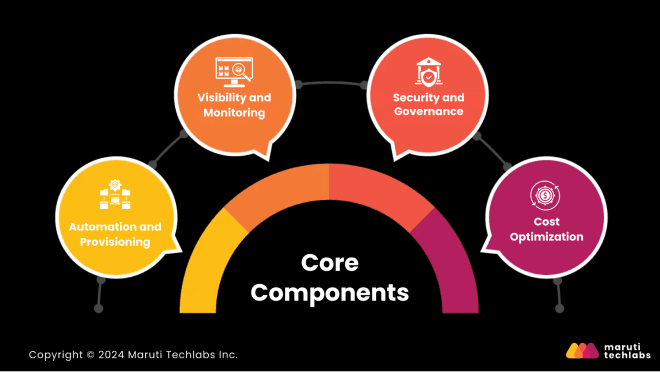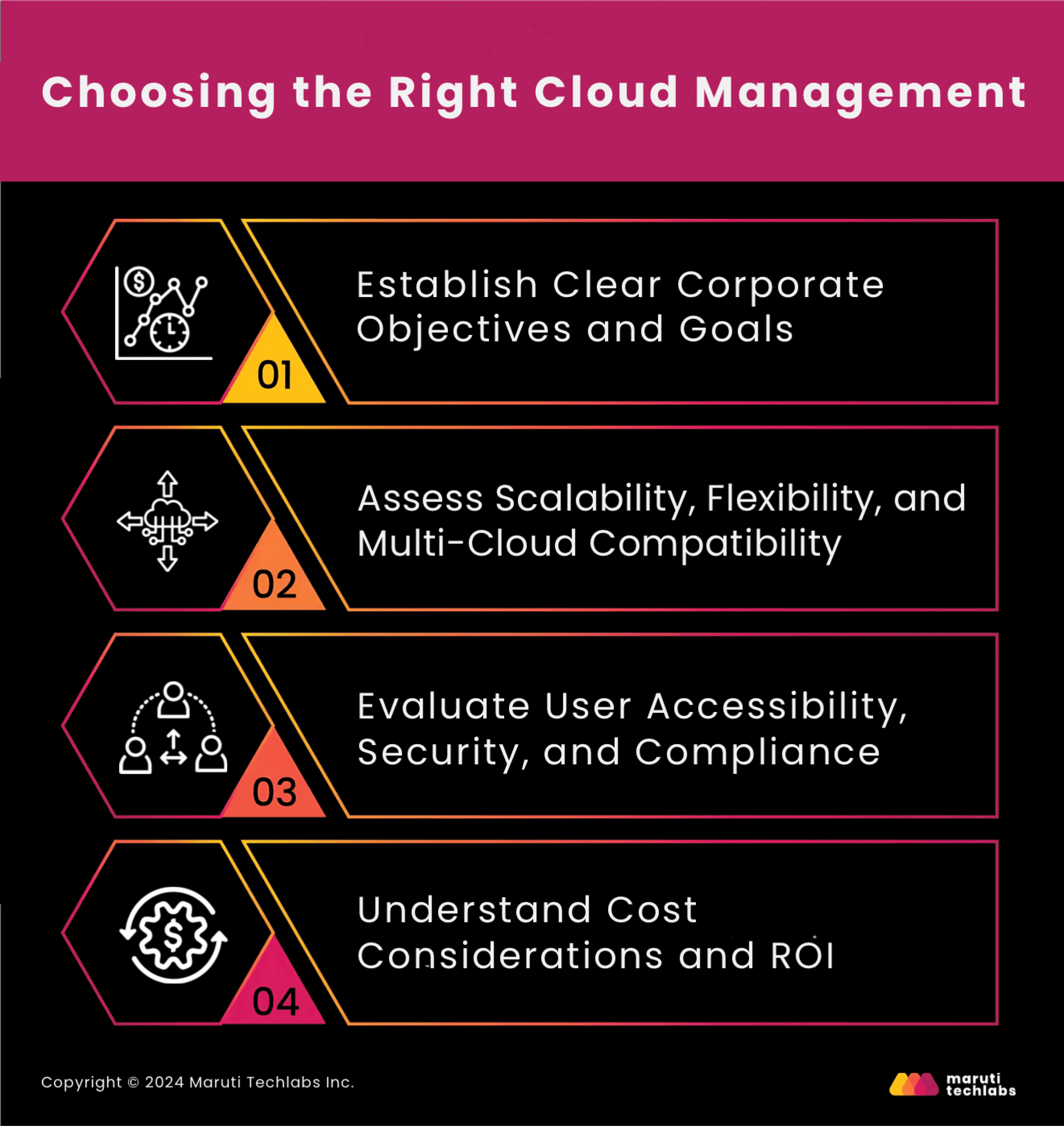

Optimize Your Cloud, Maximize Your Profits: A Practical Playbook






Cloud infrastructure management has evolved beyond a mere technical necessity; it has become a key strategic asset. Utilizing AWS can scale seamlessly during high-demand periods, such as when a new season of a popular series drops, all while keeping costs in check.
Slack, a cloud-based team communication platform, harnesses the combined power of Amazon Web Services (AWS) and Google Cloud to smoothly scale from supporting small teams to operating globally without a hitch. Whether you’re a Fortune 500 corporation or an emerging startup, mastering cloud infrastructure management can be crucial to keeping you agile in today’s competitive environment.
In this article, we’ll cover the key strategies for optimizing cloud infrastructure management, including automation, cost reduction, and enhanced security, to help streamline your operations and scale effectively.
Cloud infrastructure is the foundation of modern enterprises, consisting of hardware and software components such as servers, storage, networking tools, and virtualization technologies. These elements work together to offer scalable, flexible computing resources. Proper management of cloud infrastructure becomes crucial as more companies rely on cloud services to power their operations.
Managing cloud infrastructure is also essential to getting the most out of your investment, ensuring that resources are used efficiently, maximizing performance, and controlling costs. It’s not just about keeping everything running smoothly; it’s about staying competitive and responsive in a fast-moving market.
Now, let’s dive into how simplifying and optimizing your cloud resources can further enhance efficiency.
When you simplify and optimize your cloud infrastructure, you streamline processes across your organization. This means faster application and service deployment, translating to better user experiences and quicker responses to market changes. Plus, a well-managed cloud environment ensures better security—protecting your data and keeping you compliant with industry regulations.
Effective cloud infrastructure management directly impacts your company’s ability to scale. You can quickly adjust resources to meet demand, whether scaling up during peak times or when things slow down. This level of flexibility improves operations and keeps costs in check while robust security measures ensure your data is safe, and your operations remain compliant with legal standards.
The main goals of cloud infrastructure management are to automate, adapt, save money, and cut down on time.
Now that we know the significance of cloud infrastructure management, let’s explore the main advantages that proficient cloud infrastructure management can offer your business.
Effective cloud infrastructure management is about more than keeping your systems running—it’s about transforming how your business operates. When managed properly, your cloud infrastructure becomes a powerful tool that drives innovation, reduces costs, and scales easily.
Here are some of the key benefits of optimizing your cloud infrastructure:
Automation is one of the most significant advantages of modern cloud infrastructure management. Using artificial intelligence and machine learning, companies can automate tasks requiring manual effort. This lets your team concentrate on more strategic projects and guarantees that these tasks are performed accurately and swiftly.
The outcome? A more efficient, error-free environment that consistently adjusts to your business requirements.
Managing cloud infrastructure gives you clear visibility into resource usage, allowing cloud management tools to highlight how resources are allocated and identify areas of potential overspending. When you analyze this information carefully, you can make educated choices to improve your setup by removing instances and adjusting over provisioned storage.
This streamlined approach reduces costs and ensures your infrastructure maintains optimal performance.
A common challenge during internet disruptions is managing fluctuating resource demand. Cloud infrastructure offers scalability, but effective management is crucial for adjusting resources in real-time. With proper cloud management, you can effortlessly scale up or down based on traffic needs, ensuring high performance without unnecessary costs.
This flexibility means you maintain optimal service levels, even during peak times, without overspending on unused resources.
Cloud infrastructure administration is one of the most neglected reasons a cloud environment can provide your company with the most up-to-date technology, real-time reporting, and visibility. Detailed software will provide you with deep insights into the health of the cloud, the performance of the infrastructure, and critical security issues.
This clear view allows you to make smart decisions. You can move resources around or enhance security, ensuring your setup matches and supports.
Now that we’ve reviewed the benefits let’s examine the main parts that help make cloud infrastructure management work well and last.

Effective management of your cloud infrastructure requires a strategic approach focusing on the key areas of automation, visibility, cost control, and security. Each component is vital in ensuring your infrastructure operates efficiently and scales smoothly. Let’s dive into the core elements of optimizing cloud infrastructure management for maximum efficiency.
Automating tasks enhances the efficiency of cloud systems by allowing teams to swiftly configure and utilize resources using self-service tools instead of relying on manual authorization processes.
Automating tasks such as setting up configurations and scaling eliminates the need for steps. This results in time savings and enhanced productivity, enabling your team to concentrate on activities such as innovation and enhancing business operations.
Simply put, when you automate tasks, you have time to focus on the important aspects. Expanding your business.
Maintaining visibility across complex environments is one of the biggest challenges in managing cloud infrastructure. With real-time monitoring tools, you gain a clear view of your system’s health, receive alerts, and track performance metrics. These insights allow you to act quickly when an issue arises, often resolving problems before they impact users.
Identifying and addressing issues minimizes downtime, improves user experience, and keeps operations running smoothly. Monitoring tools also enable you to spot inefficiencies and optimize resource allocation as you scale.
Security is crucial in cloud infrastructure management. Properly configuring your provider’s security controls is the first step in protecting your data and staying compliant with regulations. Every infrastructure layer needs security measures like encryption, access control, and threat monitoring to keep your system safe.
Governance plays an important role in multi-cloud and hybrid-cloud setups. It ensures security standards are followed across all environments and the right policies are in place to manage risks. Without strong governance, even a secure infrastructure can become vulnerable.
The flexibility of cloud infrastructure offers significant advantages but also comes with the risk of overspending. Granular control over resource consumption is crucial to prevent waste and avoid unnecessary expenses. Cloud management tools help you identify underutilized resources, eliminate wasteful spending, and take strategic actions, such as turning off unused instances.
Effective cost management ensures you pay only for what you need when needed, making your cloud infrastructure efficient and cost-effective.
Now that we’ve explored the core elements of optimizing cloud infrastructure management, the next step is choosing the right tools to make it happen.
When selecting a cloud management solution, aligning your choice with your business needs is crucial. The right platform will support your growth, improve efficiency, and secure your operations.

Here are the key factors to consider when making your decision:
Start by defining what you want to achieve with your cloud infrastructure, whether you are aiming to improve scalability, reduce costs, or enhance security. Clear objectives ensure your chosen solution aligns with your company’s goals and vision. Whether looking for short-term efficiency or long-term growth, identifying these goals upfront will guide your selection process.
As your business grows, so will your cloud infrastructure needs. It’s essential to choose a solution that scales easily with your operations. Look for flexible platforms that allow you to add or reduce resources as needed.
Additionally, assess how well the solution integrates with multi-cloud strategies, which are becoming increasingly common for businesses that use multiple cloud providers for different services.
Your cloud management solution should provide easy access for your team while guaranteeing strong security. Evaluate the platform’s user-friendliness and whether it supports secure access controls and compliance with regulations relevant to your industry.
Prioritize solutions that include strong encryption, user authentication, and ongoing security monitoring to protect your data and ensure regulatory compliance.
Management of the cloud should never be a costly process. Review what kind of pricing models are offered by the solution and whether they fall within your budget and expected return on investment (ROI).
A good solution should help you manage resources effectively in ways that reduce unnecessary spending while delivering value through improved performance, scalability, and security. Look for platforms that provide transparent pricing and allow you to track and optimize costs over time.
Selecting the right tools for cloud infrastructure management is critical for achieving efficiency and scalability. The right cloud management solutions enable your organization to optimize operations, enhance performance, and adapt quickly to changing demands. As you look to the future, staying updated with trends and best practices will be essential for maintaining a competitive edge.
Maruti Techlabs specializes in providing tailored cloud management solutions that drive operational success and support your growth. Don’t leave your cloud strategy to chance—collaborate with us to harness the full potential of your cloud infrastructure.
Together, we can build a resilient and scalable future for your business. Contact Maruti Tech today to get started! To estimate your migration costs and ROI before you begin, try our Cloud Migration Cost Calculator and plan your cloud journey with confidence.
Automation removes manual duties, freeing your staff to focus on strategic projects instead of mundane maintenance. By automating processes such as provisioning and scaling, you may reduce errors and increase reaction times to changing demand.
Taking all circumstances into consideration, synthesizing the data analysis will accurately tell you how you utilize the cloud and will enable you to arrive at decisions regarding proper resource management and saving costs by helping you identify cloud resource patterns, assist in measuring performance, and, needless to say, allow you to anticipate challenges.
Begin by assessing your current cloud infrastructure and identifying areas for improvement. Research available tools, set clear goals, and involve your team in decision-making to find solutions that best fit your organization’s needs.
Stay updated on trends in cloud computing, such as multi-cloud strategies and advanced security frameworks. Regularly evaluate your tools and practices to ensure they align with your evolving business needs.
Implement security measures at every cloud infrastructure layer, including encryption, access controls, and regular audits. Also, choose cloud management tools that prioritize security and compliance to protect your data.


